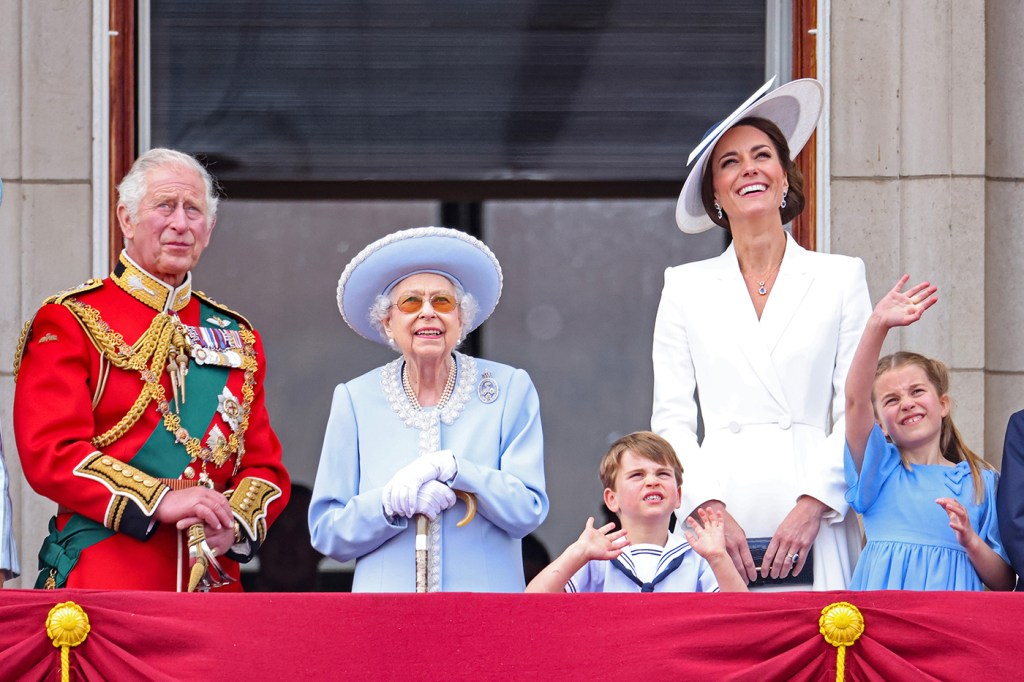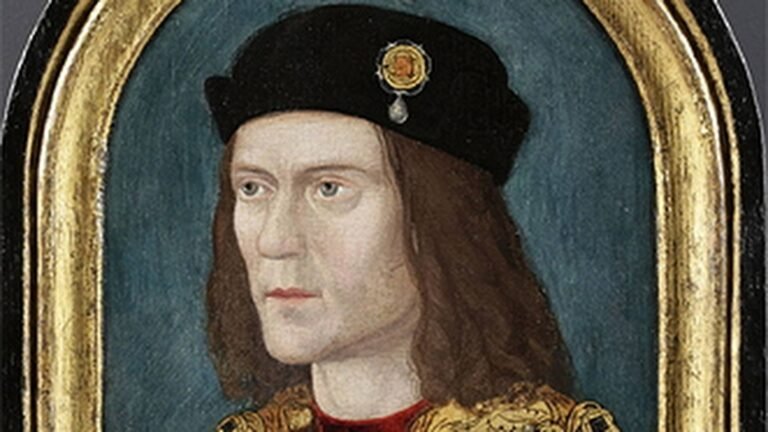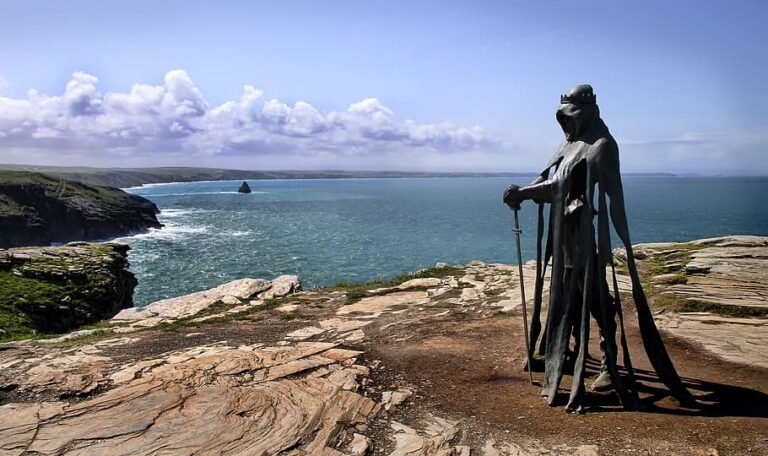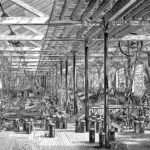Elizabeth II, the longest-reigning British monarch, has left an indelible mark on history. Her life and reign span significant events and changes in the world.
Born in 1926, Elizabeth became queen in 1952, leading the United Kingdom through decades of transformation. Her reign is notable for its stability and continuity. She has seen numerous prime ministers and witnessed many global shifts. Elizabeth II’s role extends beyond ceremonial duties; she symbolizes unity and tradition.
Her life story is fascinating, filled with moments of personal and public significance. Understanding her journey offers insights into modern history and the British monarchy. Join us as we explore the life and legacy of Queen Elizabeth II, a figure of enduring influence and respect.

Credit: news.northeastern.edu
Early Life
Elizabeth II, one of the most iconic and revered figures in modern history, had a fascinating early life that shaped her into the remarkable monarch she became. Her journey from a young princess to the Queen of the United Kingdom is filled with intriguing stories and valuable lessons. Let’s delve into her childhood and family, as well as her education and interests.
Childhood And Family
Elizabeth Alexandra Mary Windsor was born on April 21, 1926, in London. Her parents were Prince Albert, Duke of York, and Lady Elizabeth Bowes-Lyon. Did you know that she was not originally expected to become queen? Her father, Prince Albert, was the second son of King George V, making Elizabeth third in line to the throne.
Her family life was relatively quiet and private. They lived in a townhouse in London and had a country home in Windsor. Elizabeth had a younger sister, Princess Margaret, with whom she shared a close bond. They spent their early years playing in the gardens and learning about the world around them.
Education And Interests
Unlike many of her peers, Elizabeth did not attend a traditional school. Instead, she was educated at home by private tutors. One of her main tutors was Marion Crawford, who wrote a famous book about her life called “The Little Princesses”.
Elizabeth had a keen interest in history and languages. She became fluent in French, a skill that proved valuable during her reign. She also loved horseback riding, a passion that stayed with her throughout her life.
Her education was not just academic. She was taught the responsibilities of royalty from a young age. Imagine learning how to open hospitals and attend official ceremonies when you were just a child! How do you think this early training influenced her later as a queen?
By understanding Elizabeth II’s early life, you can see how her upbringing and education prepared her for the immense responsibilities she would eventually undertake. Her story is a testament to the importance of family support, education, and early exposure to responsibilities.
Ascension To The Throne
Elizabeth II’s ascension to the throne marked a significant moment in British history. Her journey to becoming queen involved a series of pivotal events. Let’s explore the circumstances that led to her becoming queen and the grandeur of her coronation ceremony.
Circumstances Of Succession
Elizabeth became heir presumptive due to her father’s unexpected ascension. King George VI took the throne after Edward VIII’s abdication. Elizabeth’s father became king when she was just ten years old. This change in royal duties prepared her for future responsibilities.
Elizabeth’s father, King George VI, passed away on February 6, 1952. She was in Kenya at the time, representing the crown. With the news of her father’s death, Elizabeth became queen instantly. Her return to England marked the beginning of her reign.
Coronation Ceremony
Elizabeth’s coronation took place on June 2, 1953, at Westminster Abbey. The ceremony was a grand event with representatives from across the world. The coronation was the first to be televised, reaching millions of viewers. This historic broadcast brought the monarchy closer to the public.
The ceremony followed ancient traditions, showcasing the rich heritage of the British crown. Elizabeth took the coronation oath, pledging to serve her people. She was then anointed, invested with regalia, and crowned. The event marked the start of a new era for the British monarchy.
Major Milestones
Elizabeth II, the longest-reigning British monarch, has seen numerous major milestones throughout her reign. These milestones not only mark significant moments in her life but also reflect important historical events that have shaped the modern world. Let’s delve into two of the most celebrated jubilees: the Silver Jubilee and the Golden Jubilee.
Silver Jubilee
Elizabeth II celebrated her Silver Jubilee in 1977, marking 25 years on the throne. The festivities were grand, involving street parties, parades, and special events across the UK and Commonwealth.
As a child, I vividly remember the excitement and unity during this period. Communities came together, showcasing a rare collective spirit.
Reflecting on this, how often do we celebrate our own milestones with such enthusiasm? Is there a way we can bring that same level of joy and community spirit to our personal achievements?
Golden Jubilee
In 2002, Elizabeth II reached her Golden Jubilee, celebrating 50 years of service. This milestone was particularly poignant as it followed the deaths of her sister, Princess Margaret, and her mother, Queen Elizabeth The Queen Mother.
The Golden Jubilee saw a blend of solemn reflection and joyous celebration. Concerts, fireworks, and nationwide events marked the occasion.
My family attended one of the local events, and I recall the sense of history and resilience that was palpable. It made me wonder how we can honor our past while looking forward to the future.
These jubilees remind us of the importance of celebrating longevity and dedication. How do you celebrate your milestones? Do you take the time to reflect and appreciate your journey?
Challenges Faced
Throughout her long reign, Queen Elizabeth II faced many challenges. Some were political, while others were personal. Each test of her resolve showed her strength and dedication to her role. Let’s explore some of these challenges in detail.
Political Turbulence
Queen Elizabeth II witnessed many changes in the political landscape. She saw the end of the British Empire and the rise of the Commonwealth. The Queen had to navigate through periods of economic crisis and political unrest. The 1970s brought the Troubles in Northern Ireland, a time of great violence. The Queen showed a steady hand and calm presence during these tough times.
In the 1990s, the monarchy faced scrutiny from the public and the media. Questions about the royal family’s role grew louder. The Queen had to adapt and modernize the monarchy. This was not an easy task. Through it all, she remained focused on her duty and service.
Family Scandals
The royal family experienced many scandals during Elizabeth II’s reign. These events put the Queen under intense public and media scrutiny. In the 1990s, three of her children’s marriages ended in divorce. The most notable was the split between Prince Charles and Princess Diana. The media frenzy around their marriage and divorce was relentless. The Queen had to handle the fallout while maintaining the dignity of the Crown.
The tragic death of Princess Diana in 1997 was another major challenge. The public’s grief and anger were directed at the royal family. The Queen’s initial response was seen as distant. She had to balance her role as a grandmother with her duties as monarch. Her eventual public address helped to calm the nation.
Modernizing The Monarchy
Queen Elizabeth II has been a pivotal figure in transforming the British monarchy to fit contemporary times. Her reign has seen an evolution in public engagements and media relations, making the royal family more accessible and relatable. Let’s delve into how she’s achieved this.
Public Engagements
Elizabeth II has embraced a more hands-on approach to public engagements. Gone are the days of distant, formal appearances. She has shown a willingness to connect with people on a personal level.
Whether it’s visiting local schools or participating in community events, her presence is more personable. This approach makes the monarchy feel more connected to everyday citizens.
Have you ever wondered how a simple gesture from a monarch can boost morale? Elizabeth II’s genuine interest in public welfare has created lasting positive impacts on communities.
Media Relations
The Queen has navigated the changing landscape of media with remarkable adaptability. During her early reign, television was emerging as a powerful tool. She used it to broadcast her coronation, reaching millions worldwide.
In recent years, social media has become a significant platform. The royal family’s official accounts share updates, engage with followers, and provide behind-the-scenes glimpses. This transparency fosters a closer connection with the public.
Imagine scrolling through your feed and seeing a candid photo of the Queen. This kind of accessibility makes the monarchy feel more approachable and modern.
How do you think these media strategies have influenced your perception of the royal family? By embracing new media, Elizabeth II has ensured the monarchy stays relevant in a fast-paced digital age.
Global Influence
Elizabeth II’s reign saw remarkable global influence. Her impact extended beyond the UK. She touched many lives and nations. Her leadership was felt worldwide. She often emphasized unity and cooperation. This influence was seen in her relations with the Commonwealth and her diplomatic efforts.
Commonwealth Relations
Elizabeth II valued the Commonwealth deeply. She played a key role in its growth. The Commonwealth consists of 54 nations. These nations share historical ties with the UK. She promoted peace and mutual respect among them. Her visits to these countries were significant. They strengthened bonds and fostered collaboration.
She addressed issues of development and human rights. She encouraged dialogue and understanding. Her commitment to the Commonwealth was unwavering. This helped maintain a sense of unity. Many leaders respected her views. Her influence was vital in shaping the Commonwealth’s direction.
Diplomatic Efforts
Elizabeth II was a skilled diplomat. She met with numerous global leaders. Her diplomatic efforts spanned decades. She worked to build strong alliances. Her approach was always respectful and thoughtful. This earned her admiration worldwide.
She often hosted state visits at Buckingham Palace. These events were more than formalities. They were opportunities to foster international goodwill. Her presence at these events was vital. She used these moments to promote peace and cooperation.
Her speeches often highlighted common goals. She emphasized shared values and aspirations. This approach helped ease tensions. It built trust between nations. Her diplomatic legacy is profound and enduring. Her influence continues to inspire leaders today.
Personal Life
Elizabeth II led a life marked by dedication to her royal duties. She enjoyed horse riding and spending time with her family. Her personal interests included dogs, particularly corgis.
When diving into the personal life of Queen Elizabeth II, you uncover a tapestry woven with both royal duties and intimate family moments. Her life wasn’t just about reigning over a kingdom; it was also about nurturing relationships and building a family legacy. Let’s explore these facets of her life through her marriage and her children and grandchildren.
Marriage To Prince Philip
Queen Elizabeth II married Prince Philip in 1947. Their union was a testament to enduring love and mutual respect. Imagine balancing the responsibilities of a queen with the demands of a wife; Elizabeth did it with grace.
Their marriage lasted over 70 years. During this time, they faced world wars, political changes, and personal challenges together. Prince Philip was known for his unwavering support, often being the steady rock behind the queen’s public life.
Have you ever wondered what it’s like to maintain such a long-lasting relationship under public scrutiny? Elizabeth and Philip managed it by focusing on their shared values and mutual respect. Their partnership became an example of enduring love, even in the most challenging circumstances.
Children And Grandchildren
Queen Elizabeth II and Prince Philip had four children: Charles, Anne, Andrew, and Edward. Each child had a distinct path, contributing uniquely to the royal family and the nation.
Charles, the eldest, is the Prince of Wales and the heir apparent. He’s always been in the spotlight, preparing for his future role as king. Anne, known for her strong will and dedication, has been heavily involved in charitable work.
Andrew and Edward, while less in the limelight, have also played their roles in supporting the monarchy. Their lives illustrate the balance between personal desires and public responsibilities.
The queen also has numerous grandchildren, including Princes William and Harry. Each grandchild has carved out their own niche, blending royal duties with personal passions. Have you ever thought about the pressures they face? It’s a unique blend of tradition and modernity, where they must honor the past while navigating the present.
Queen Elizabeth’s personal life, filled with love, challenges, and triumphs, provides a fascinating glimpse into the human side of a monarch. Her story invites you to reflect on your own family dynamics and the legacies you wish to build.

Credit: www.britannica.com
Legacy And Impact
Elizabeth II left an indelible mark on the world. Her reign shaped modern history and culture. Her influence extended beyond the United Kingdom. She became a global icon, respected and admired. Her legacy continues to inspire generations.
Cultural Contributions
Elizabeth II’s reign influenced art, literature, and fashion. She became a muse for artists and writers. Her sense of style set trends for decades. Royal events under her reign showcased Britain’s rich traditions. These events attracted global attention and admiration.
Her patronage supported numerous cultural institutions. The Royal Collection grew under her care. She promoted British heritage and culture worldwide. Her presence at cultural events boosted their significance. Her contributions to culture remain unmatched.
Enduring Public Image
Elizabeth II maintained a strong public image. She appeared dignified and composed in all situations. Her speeches were heartfelt and sincere. She connected with people from all walks of life. Her image as a steady leader brought comfort to many.
Her visits to different countries strengthened international relations. People saw her as a symbol of stability. Her dedication to duty was unwavering. Her public appearances were always carefully planned. She left a lasting impression on everyone she met.
FAQs
What Is The Queen’s Real Name?
The Queen’s real name is Elizabeth Alexandra Mary Windsor. She was born on April 21, 1926.
Why Didn’t Elizabeth’s Mother Become Queen?
Elizabeth’s mother didn’t become Queen because she was married to King George VI. As his wife, she became Queen Consort.
Who Is The Oldest British Royal Still Alive?
Princess Alexandra, born on December 25, 1936, is the oldest living member of the British royal family.
Who Will Be King After Charles?
Prince William will be the next king after Charles. He is first in line to the British throne.
Conclusion
Elizabeth II’s legacy is vast and impactful. She led with grace and strength. Her dedication inspired many. History will remember her contributions. She faced challenges with resilience. Her reign was a symbol of stability. People admired her commitment and wisdom.
Elizabeth II’s influence will last for generations. Her story is one of service. She will always be remembered fondly. Her legacy continues to shape the world.








